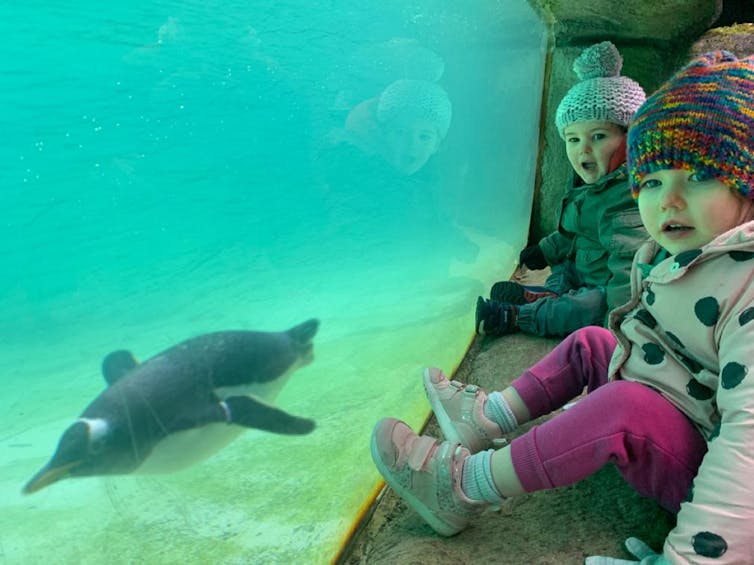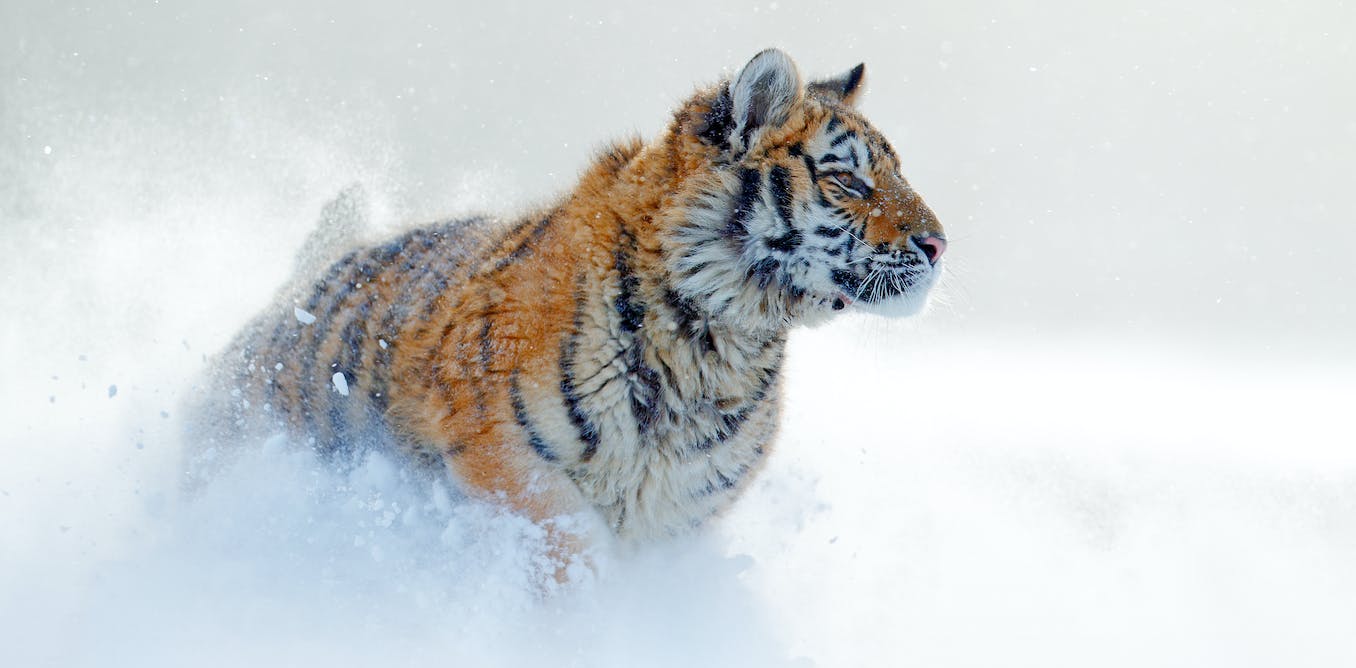The temperature has dropped, the nights have drawn in. The winter holidays have started, families are gathered – so where can you go to fuel the imagination and get some fresh air? A zoo might not be your first thought – but with some offering reduced ticket prices and smaller crowds than in summer, your nearest zoo on a cold, crisp winter’s day might be just the place.
We might think that their most popular animals, large mammals, are only active in summer, because that time of year suits us better. However, not all animals love sunshine and the hot days of summer. Some prefer cooler weather and are more active in colder temperatures. Here are ten animals to look out for on a winter visit to the zoo:
1. Amur tiger
In the wild, Amur tigers live in northern China and Russia so are used to the cold, making them more active during our winter months. These endangered animals are crepuscular (active at dawn and dusk), so I would head over to see them towards the end of your day at the zoo. There are currently 40 Amur tigers living in 17 UK zoos.
2. Grey wolf
Native to Eurasia, the US, Canada and Greenland, the grey wolf lives in many different habitats, including places where temperatures drop as low as -40°C. Grey wolves can communicate across up to ten miles using individually recognisable howls. They also howl during the breeding season (February-March), so you might be lucky and hear them in the zoo during late winter or early spring.
3. Bison
In the wild, bison live in northern Europe and Russia as well as in the US and Canada, so they cope well in UK winters. These animals will be foraging for most of the day, and are likely to be out in all weathers.
4. Red panda
Wild red pandas live in the forests of the Himalayas and China, between 2,500m and 4,800m above sea level. These endangered animals will be active around feeding time – check the zoo’s schedule so you can time your visit to watch them climb down from their treetop snooze spot.
5. Red squirrel
Native to the UK, these cute mammals are already used to British winter conditions. There are still places where you can see them in the wild, such as the Isle of Wight and Scottish woodlands. But their numbers have been in decline since grey squirrels from the US were introduced in the 19th century. Some zoos in the UK are part of a captive breeding and release programme, working to restore their numbers in the wild.
6. Polar bear
It won’t come as a surprise that this much-loved winter animal is on our list – and you should see playful polar bears swimming and splashing around in their pools a lot more in winter. Four UK zoos house them: Peak Wildlife Park near Stoke-on-Trent, Yorkshire Wildlife Park in Doncaster, Highland Wildlife Park in Cairngorms National Park, and Jimmy’s Farm & Wildlife Park in Ipswich.
Yasmin Walker, Peak Wildlife Park
7. Snow leopard
The name gives this one away as another big cat that likes the cold. Snow leopards live in the rugged mountains of central Asia. They are quite elusive so spotting them, even in zoos in the winter, may be a challenge. However, if you aim for late afternoon, you’re more likely to be rewarded.
8. Penguin
A lot of penguins found in UK zoos are not from the freezing Antarctic. African and Humboldt penguins, for example, are from much warmer regions of the southern hemisphere. But that doesn’t stop them wanting to engage with zoo visitors through the windows while swimming in winter – just like those from colder climates, such as the gentoo penguins shown here at Belfast Zoo.

Anne Haslam
9. Reindeer
The reindeer you see at the zoo may be getting some rest before they make their estimated 31-hour journey of 41 million miles to deliver all the presents on Christmas Eve. Males shed their antlers in autumn and winter, while females keep theirs until spring – meaning that Santa’s sleigh is probably pulled by female reindeer.
10. Reptile house (to defrost)
There is nothing better than a reptile house or aquarium to help you defrost after being outside. The animals housed here need warm conditions to survive, so the whole area normally feels warm. They will also be more peaceful places given the lower zoo visitor numbers at this time of year, so you can take your time looking at these fascinating animals.
You may be wondering how animals from warmer climates cope with British winters. Zoos should always be conscious of animal welfare and this includes providing heated indoor areas. The best way for zoos to maintain high animal welfare is to let the animals decide where they want to go. Inside with protection from the weather, or outside in the fresh cold air – the choice should be theirs.



